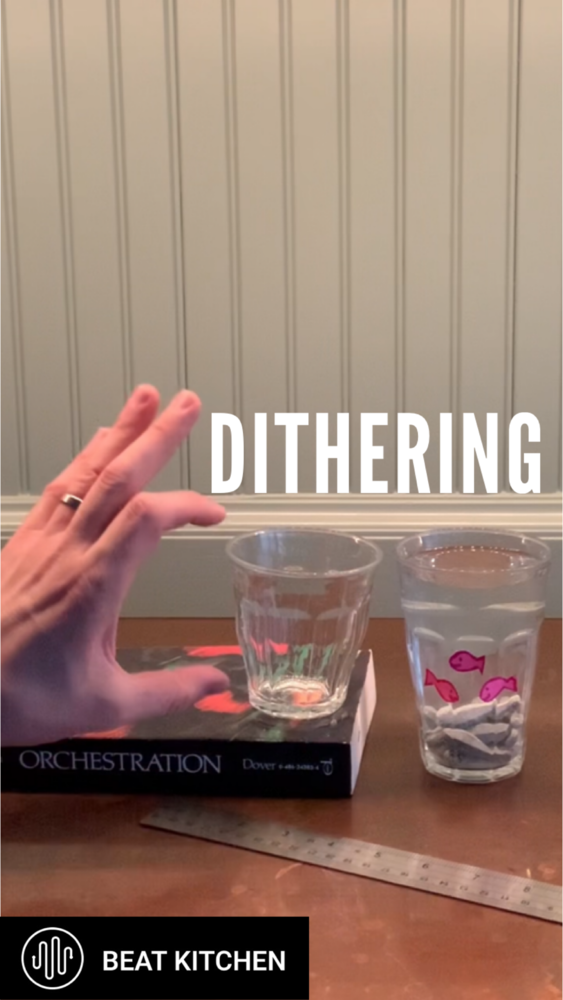When you dither, you’re intentionally adding noise to your track. Now why would you do that? This gets us back to dynamic range.
Specifically, what happens to the really quiet stuff? The resolution we use to describe dynamic range is called the bit depth. Typically it’s going to be either 16 bit or 24 bit.
If we use this ruler to describe the softest to the loudest sound, it doesn’t matter if it’s 12 inches or 30 centimeters, it’s the same length. When you go down to 16, there’s no such thing as half a bit, so you’re going to lose some information. It would be a little like saying, “I’m going to try and fit this water into this glass.” All that quiet goodness is going to be like a bunch of little fish hanging out here at the bottom.
When we add dither, we’re adding noise that drives those fish up higher, so there’s a place for them in their new home. So the rule is you only dither when you’re going from a high bit resolution like 24 to a low one like 16. Doesn’t count for MP3, that’s different.
And the other rule is if you’re going to add noise intentionally to your recording, you make sure it only ever happens once. And if you learn something like this post and share it with somebody who belongs in a

